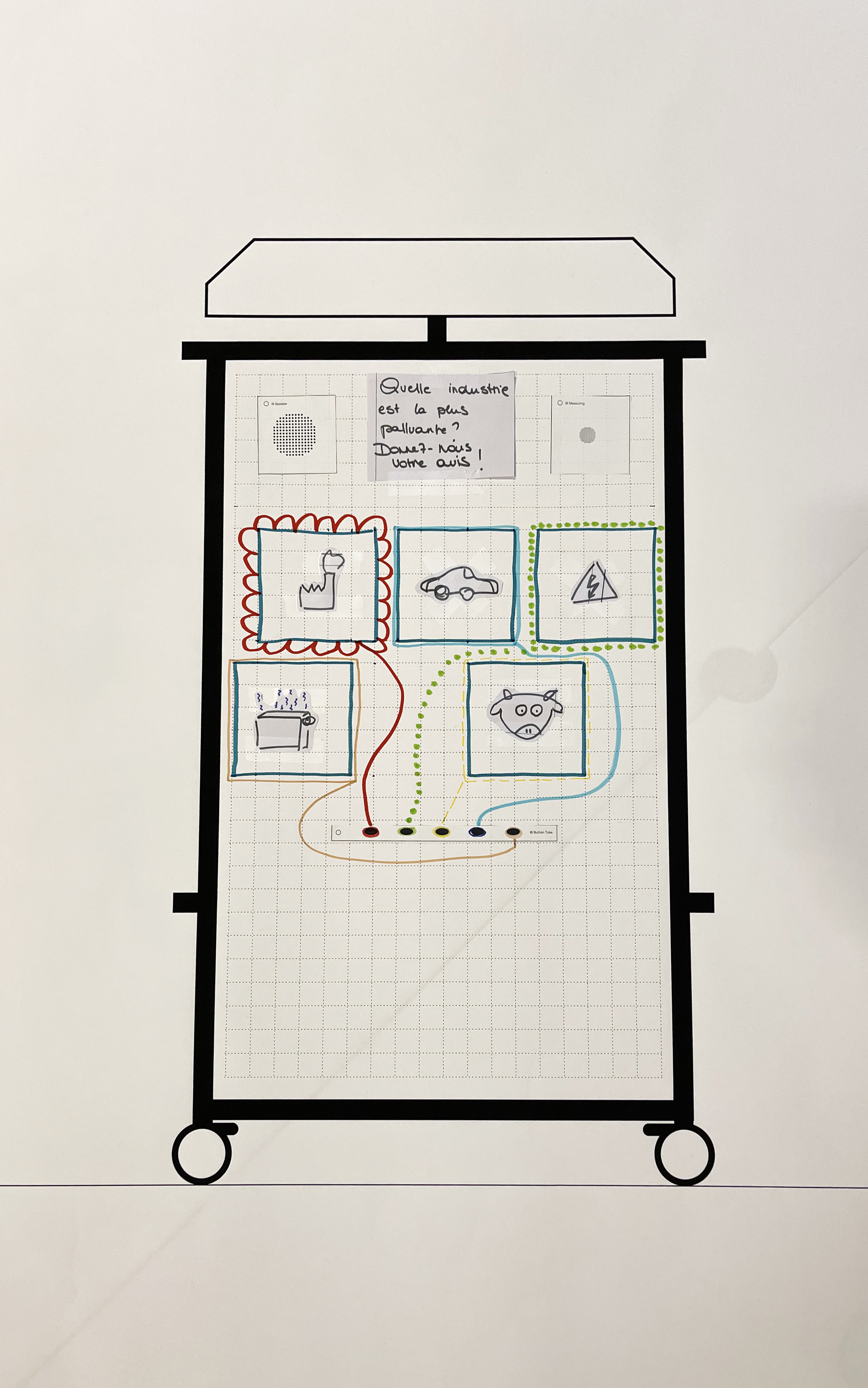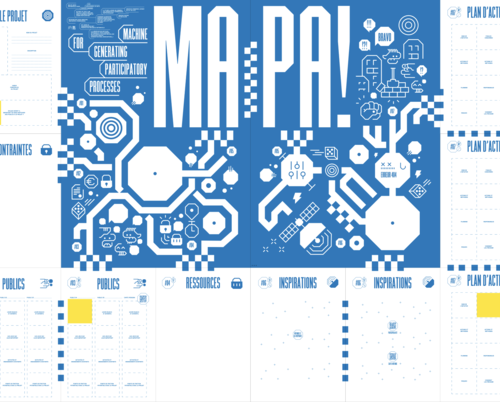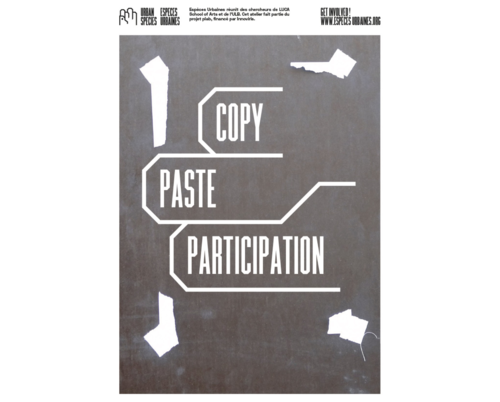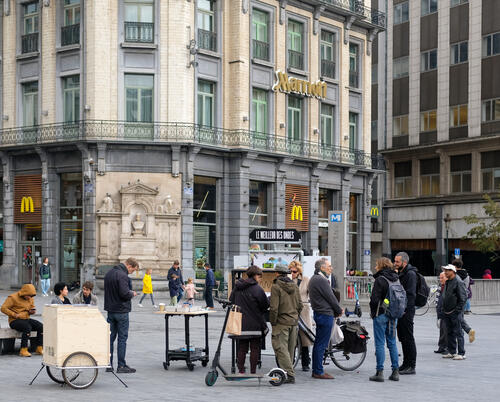Event
Workshop Report Co-creating a Civic Smart City in Brussels
Last October, Urban Species organised the Co-creating the Civic Smart City workshop in collaboration with CityFab1. The workshop started with presentations on the current state of affairs concerning Brussels as a smart city — both for Brussels City (Aude Robert) and the Brussels Region (Céline Vanderborght). The topic of the workshop day being ‘air quality’, after the morning presentations we held a mapping session in which participants mapped out all past and present air quality projects they could think of. Each project was described to unearth its specific features — how it was approached both technically and socially.
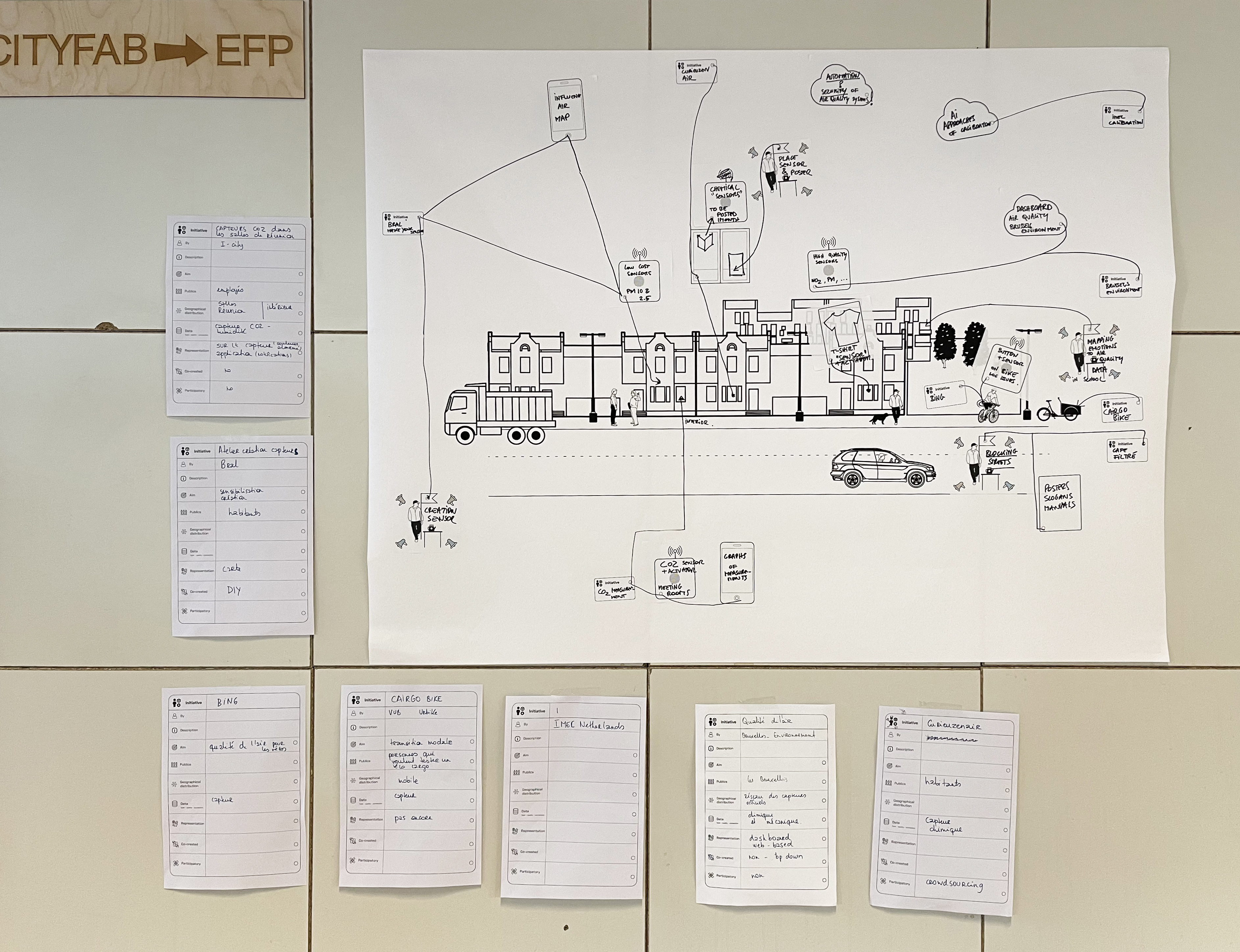
The initiatives were mapped out to see where they situated regarding the openness and participatory nature of their designs (between co-created and black-boxed), and regarding the scientific/informative versus artistic/affective dimensions of the (interface) designs.
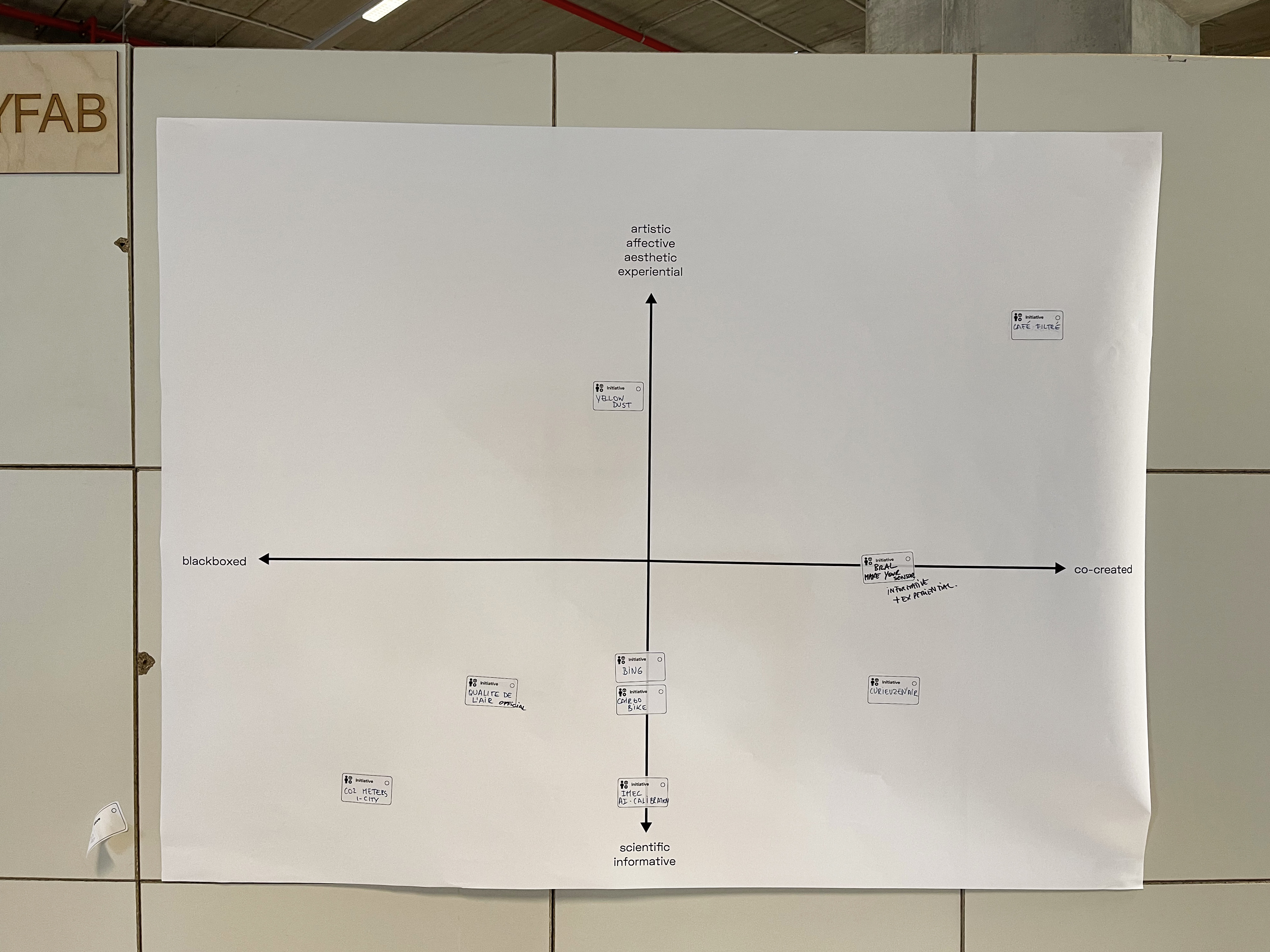
The goal of the mapping session was to collectively analyse the strengths and weaknesses of the projects and to look for opportunities for augmenting co-creative and experiential dimensions in urban air quality initiatives which focus on increasing citizen awareness and civic engagement.
In the afternoon part of the workshop day, three subgroups of participants held brainstorm and collaborative design sessions to develop concepts for urban air quality campaigns. Using the Urban Species Toolkit, they co-creatively developed concepts for civic campaigns in the form of ‘smart’ DIY media architectures. This is what they came up with:
1. ‘Air Street’ (Boulevard d'Air / Luchtstraat)
The concept of this project is to create a physical and mobile digital twin of a street and connect several air quality sensors to it. A first visualisation is to display the current air quality of the street using ludic animations. By pressing a button, participants trigger visualisations of new scenarios for the street, such as with another traffic planning, more trees, better house insulation, cleaner cars, and so forth.
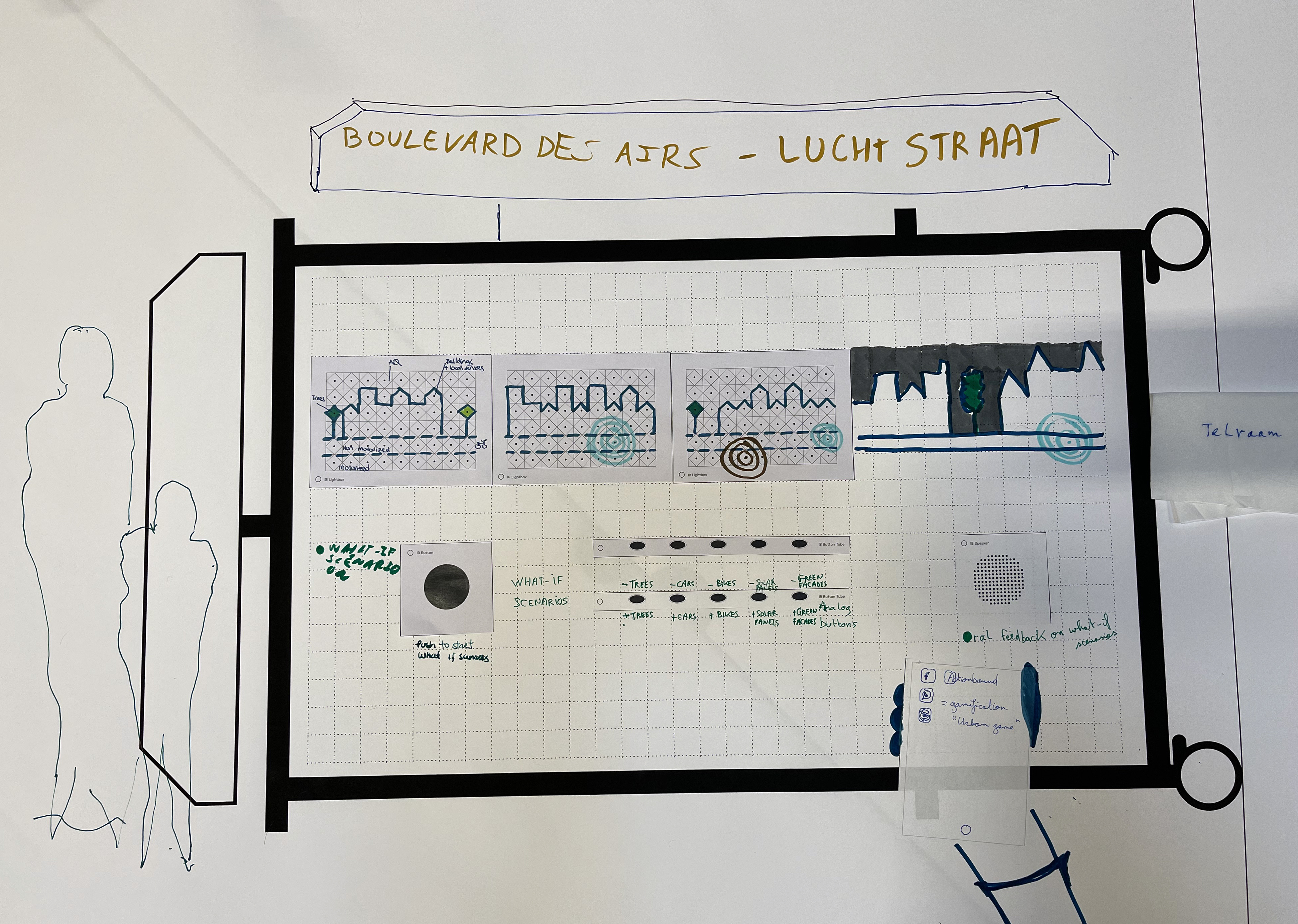
2. Experience pods on Air Quality
The aim of this project is to have participants experience the multiple types of air quality through entering enclosed atmospheric ‘pods’: from the Amazonian rainforest to the air in Shangai – arguing that having an embodied experience of what it means to be in a particular environment allows pod visitors to decide for themselves which option they like best.
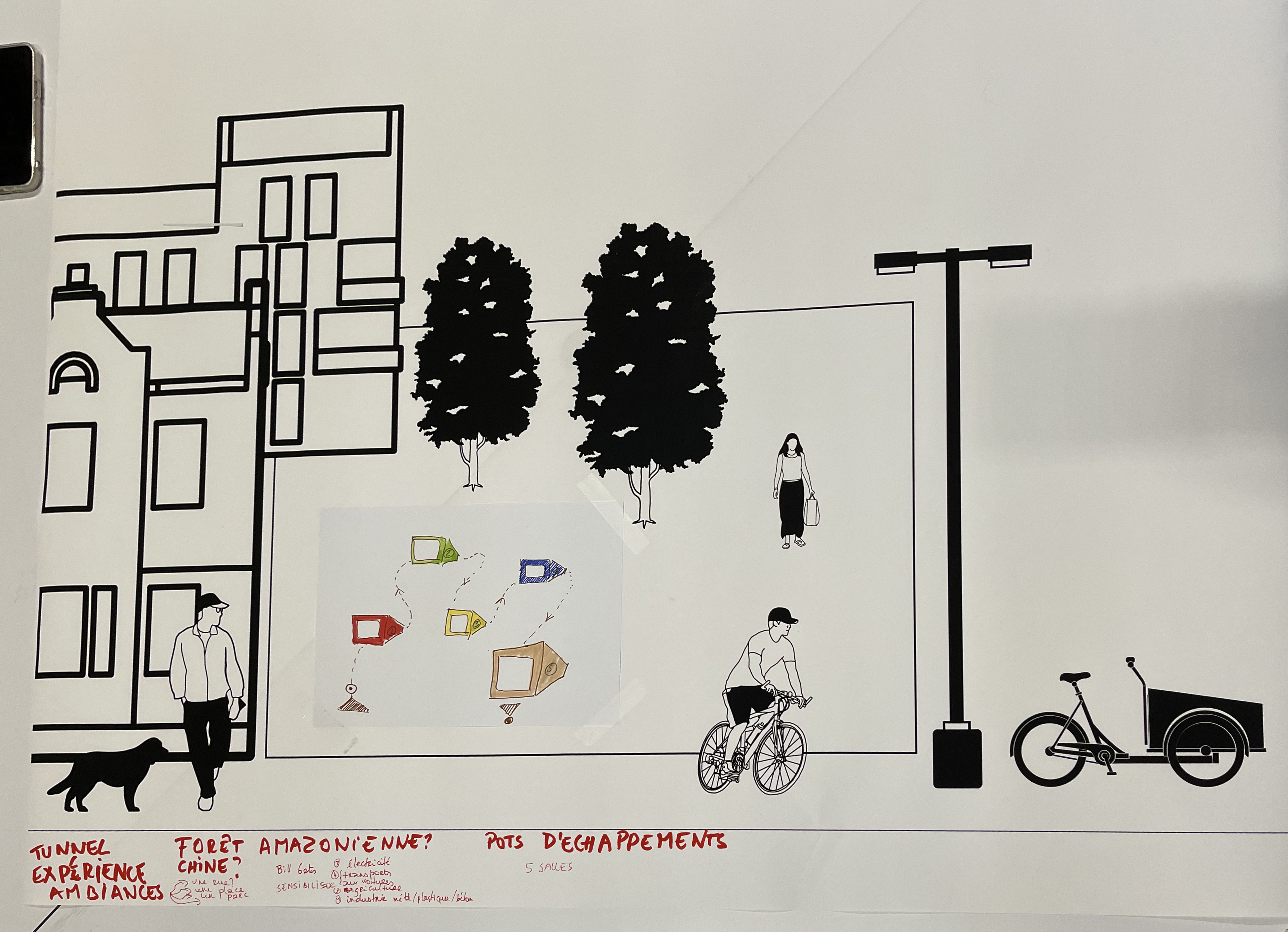
3. Ecological footprint
This project is a kind of a ludic quiz that informs citizens on which human activity has the highest ecological footprint. For often, the workshop participants argued, it is not so clear to citizens what industries generate more CO2. Is it industrial livestock keeping? Is it generating energy or electricity? Is it automobile traffic or air traffic?
